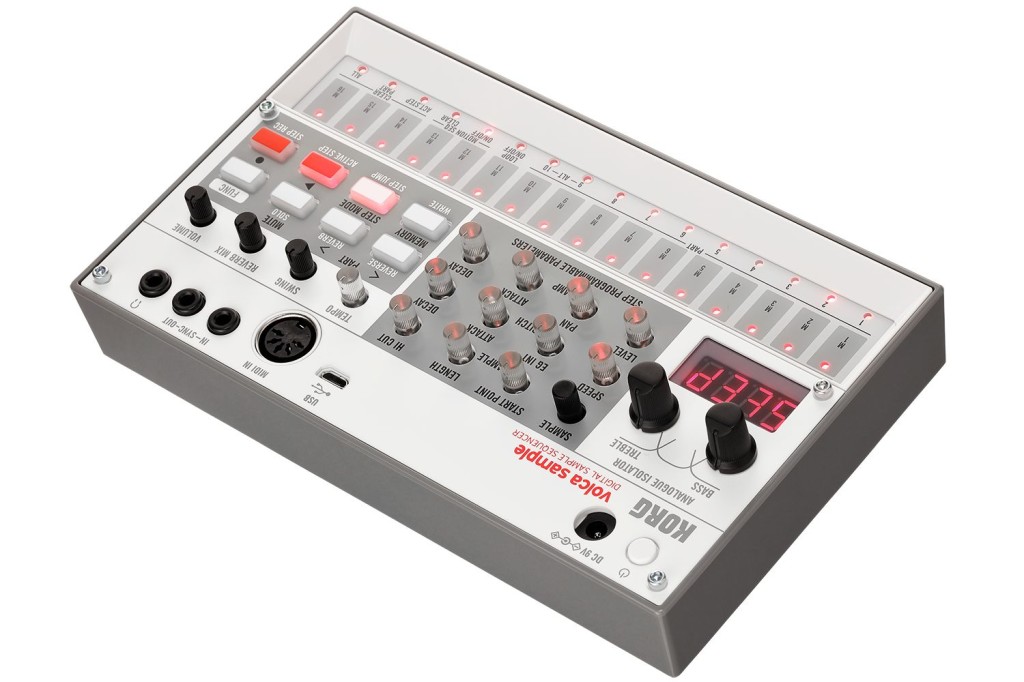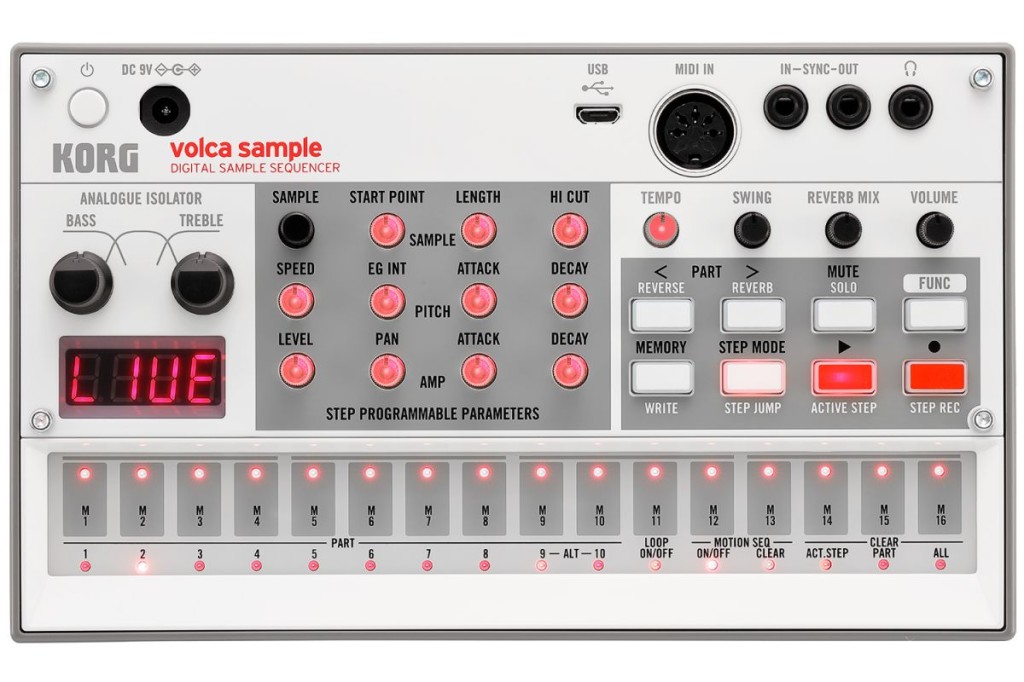The KORG volca sample was always a compact, hands-on, grungy little wonder box. Now a major revision solves its biggest problem – sample loading – and adds a ton of new features.
The volca sample is really a “sample sequencer” – think of it as a sample-based drum machine / instrument. There’s no audio input, but once you’ve got samples on there, you have all the volca pattern functionality and a ton of hands-on controls for mucking around with your sounds.
That was almost the perfect volca, because of the ability to use your own sounds and how far you could warp them via all those cute little encoders. The problem was getting the sounds on there in the first place. With only a MIDI in, KORG chose to use the audio connection for a data stream – think back to the encoding you might know from modem sounds of yore. (Kids, ask your parents.) That meant a really painfully slow and clumsy process with an iPhone or a handful of computer utilities. And then the original volca sample’s limited memory meant you were stuck with whatever you had.

No more. The new volca sample has the micro USB port the original was lacking – somehow they crammed it into the compact circuit board design. That alone would be great news, but there’s more:
- USB connectivity supports MIDI (sync, notes, control)
- More memory: now 130 seconds / 8 MB (up from 65 seconds, 4 MB)
- Preset storage: 50 empty user slots on top of 150 presets – or overwrite those for up to 200 total user slots
- More sequencer parts: now 16 parts x 16 steps (original had 10 parts)
- More recording patterns: 16 (up from 10)
- Pattern chaining (if you wanted to do this on the original, you had to manually trigger them)
- 2 different STEP JUMP modes (up from 1 – need to find out what’s new there)
- Start delay function per-part, which you can use to dial in groove/swing on individual parts now that you’ve got them (on top of the existing master swing control)
- Forthcoming Mac/PC librarian – and KORG says it still works with AudioPocket for iOS, though I hope that gets updated to work over the USB connection?
They’ve also included new sample content in collaboration with Japanese artists Moe Shop and TORIENA. And I expect the rest of us may start releasing sample packs, too, now that loading them won’t make you cry.
Now, technically this is called volca sample2, but the new case doesn’t even change the silkscreen – it still says volca sample. So apart from cutting a new hole for that USB, all of the work is done on the inside – I’m guessing with just the additional memory provided to the firmware.


But while customers normally might ding a manufacturer for not doing a full upgrade, let me say I’m glad nothing else changes. The Analogue Isolator is a gnarly circuit for severe manipulation of the bass and treble frequencies. The 31.25 kHz, 16-bit resolution sample engine already is a little closer to some vintage boxes, but you also get some pretty wonderfully harsh results when you mess with the SPEED control that I think suggest even more lo-fi mangling going on. (I need to check with former analog division engineer Tats on that. I expect I’m one of the few people ever to play this little thing on the Berghain PA. It was utterly brutal.)
No changes to power consumption also tell you that this is the same architecture underneath.
And that also means a return of all the goodness of the original, albeit now with more space for ideas:
- 10 hours battery life on 6x AA batteries
- Motion sequencer, which you can use on parameters (oh, yes – lo-fi p-lock heaven)
- Active step, step jump, swing
- Reverse
- Per-part reverb
- Analogue Isolator
- Same parameters – Sample(Start Point, Length, Hi Cut), Pitch(Speed, EG Int, Attack,Decay), Amp(Level, Pan, Attack, Decay), Reverse On/Off
- Same polyphony: 8-part (as on original) [correction – a spec sheet I was looking at was for the wrong volca!]
Just one niggle – I suspect it’s the same, but the only other downside on the original was that the reverb mix control tended to drop the overall signal level. If they adjusted that in firmware, I will be elated.
The volcas are all fun, but custom sample loading means this is the one you’re most likely to keep handy – and with these features, there’s no reason for it to ever collect any dust. Their marketing is all clear apart from the headline – “improved for more groove,” which makes more sense.
Let’s just rewrite. “volca sample2: yeah, everyone will want one, good luck selling your old one.”